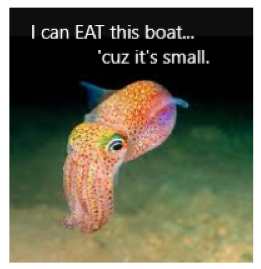14 gramms of beautiful workmanship - my Congratulations for finishing this amazing little model.
I like the idea to bring with the stand the esping on the same (water) level with your big one.
May I ask two questions, maybe already somewhere answered or discussed, but unfortunately I can not find these information.
the boat has on the sides these swords, which can be swinged out of or into the water
On one side you have two ropes for both directions, maybe better to fix the sword in poistion when it is in the water, mainly by the own weight it will hang down
View attachment 345716
othe other sword has only one of these ropes - Is there a special reason why this asymetrie
View attachment 345715
The second question (yellow arrow):
This boat has a flat bottom, so it can lay by tide on the ground without tilting
But I am surprised, why the stem or forefoot is much lower than the bottom of the boat - definitely you can not move the boat backwards laying in the mud
What is the reason, of such a special form










